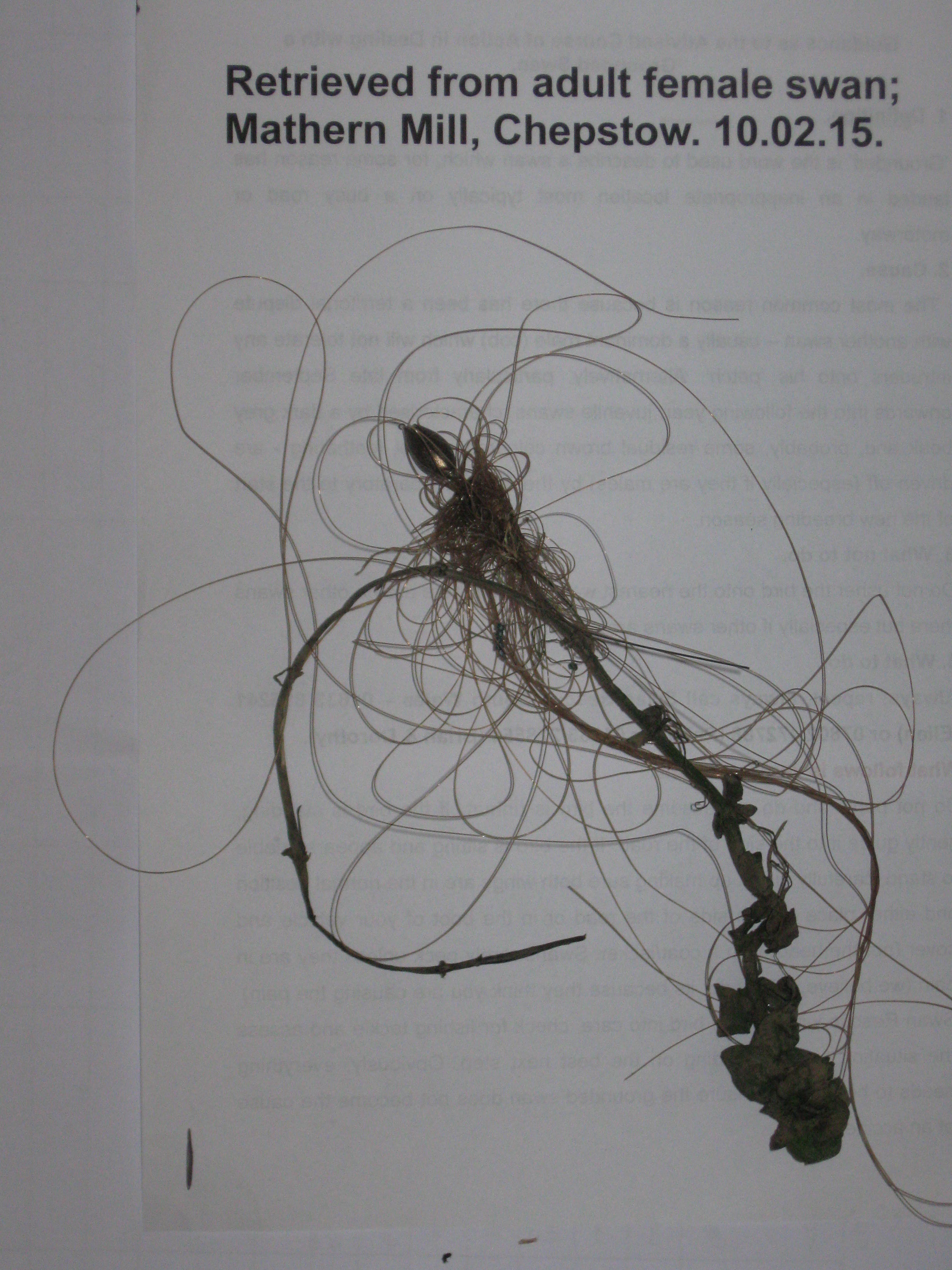 Idyllic it may seem, even although it is a cold damp afternoon in early February, but in fact it is somewhat misleading because this picture was taken after all the action had been completed.
Idyllic it may seem, even although it is a cold damp afternoon in early February, but in fact it is somewhat misleading because this picture was taken after all the action had been completed.
Thank goodness there are alert and concerned members of the public who are prepared to take action when they see something is wrong. So it was, Pauline was out walking her dog at a fishery near Chepstow and spotted one of the adult swans was trailing fishing ‘wire’ from its beak. (We continue to be puzzled why so many people refer to ‘wire’ in this context – it is nylon monofilament)! This is a location well known to us; over the years we have done quite a few angling related rescues here, and have been instrumental in getting Western Power Distribution to fit flight diverters to the ‘over-flying’ power cables – collisions with which, prior to this caused a number of bird deaths, including some swans.
A point of interest is the fact the three swans present this day were not residents – swans did not breed here in 2014; so they must have come, most likely, either from Caldicot or St. Pierre.
The nature of the problem was obvious the moment we arrived! The swan was fighting to free herself from what was a very serious encumbrance.
 The usual procedure, especially at this time of year when birds are likely to be hungry, and when there is a good chance they are ‘people friendly’, is to offer food – in this case grain and bread.
The usual procedure, especially at this time of year when birds are likely to be hungry, and when there is a good chance they are ‘people friendly’, is to offer food – in this case grain and bread.
The effect was instant! All three birds came in close, and I was kneeling sideways on, right at the water’s edge; there was a bit of a feeding frenzy, as a result of which the juvenile succeeded in getting its neck through a loop of line attached to the female. This happened at the same time as I made what I knew would be the one and only opportunity to capture the ‘tackled’ bird. So all of a sudden, I had not one swan, but two; the female beside me on my right, and the juvenile in front me, and both wriggling furiously in an attempt to escape.
Thankfully, disentangling the juvenile and letting him go was quite easy, allowing attention to be focused on the adult. Two strands of line were going down inside, and it was soon clear it was ‘fast’, and could not be withdrawn; there was no chipstrap. This left only one realistic option open – simply to cut the line, and let the bird go.
 And so back to our opening scene; the birds were still a little bit hungry and they did come for food, but this time, they kept a respectful distance away. Catching any of them now, even if there was good cause, would be extremely difficult if not impossible in the short term.
And so back to our opening scene; the birds were still a little bit hungry and they did come for food, but this time, they kept a respectful distance away. Catching any of them now, even if there was good cause, would be extremely difficult if not impossible in the short term.
All that remained was to let Pauline know the rescue had been completed, and to ask her to keep an eye on the one which had been snared; it was impossible to know for certain whether there had been any internal injury, but it could become apparent later if the bird went off her food or developed a lump in the neck. So, fingers crossed….
